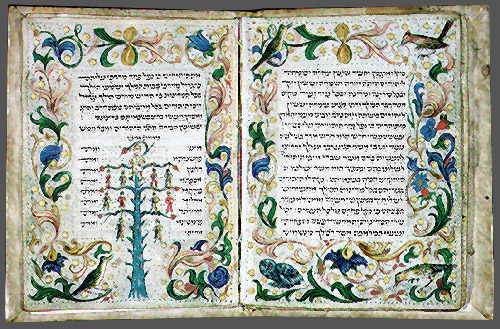Italy, 15th century
Written in square Italian script with vowel points and cantillation marks, this manuscript of the Book of Esther is distinctive in at least two ways. It is part of a larger work--a miscellany--which contained other books of the Bible as well. The manuscript begins with the last seven verses from the Book of Lamentations. It may be that the Book of Esther was removed from the original miscellany for use on the Purim holiday, when the scroll of Esther is read in the synagogue. Added to the text are two liturgical poems, "Asher Heini" and "Shoshanat Yaakov," written in a semi-square (rabbinic) Italian Sephardic hand.
The manuscript is also noteworthy for its illustrations. Although it was originally laid out with provisions for miniatures, the work was never done. The illustrations that one finds in the manuscript today were recently executed by an artist who followed motifs from a number of well-known illuminated Hebrew manuscripts, including the De Castro Pentateuch, the Rylands Haggadah, the Kaufman Mishneh Torah, and the Prayer Book of the Rabbi of Ruzhin.
Parchment, 16 leaves, 60 x 87 mm, 16 lines, in Hebrew, written in Italian square script.
